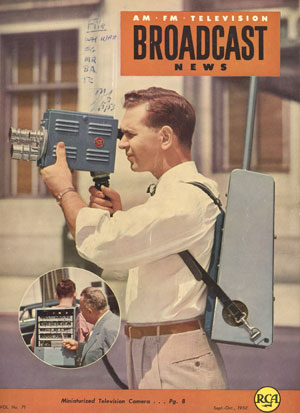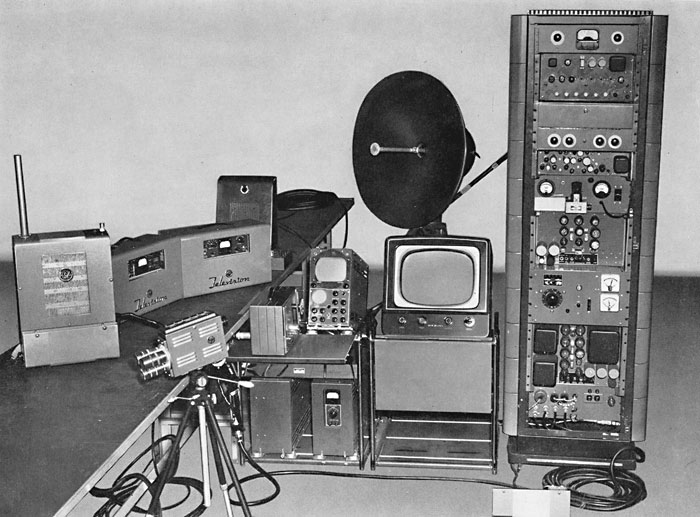|
1950 RCA Developmental Vidicon |
|
|
| This is a very early
example of the RCA Vidicon television camera tube.
The Vidicon (or Videcon, as it was originally spelled) was originally developed in the late 1940's as a smaller and cheaper alternative to the Iconoscope and Image Orthicon tubes that were available at the time. The first Vidicons were only about 6 1/4 inches long and about 1 inch in diameter (the Image Orthicons were about 15 inches long and 3 inches in diameter). The tube shown here is a developmental version of a design that was to be commercially released in August, 1952 as the type 6198. The sticker on the tube identifies it as a type C-73162. I interpret the serial number, PP64-50, as "pre-production" tube number 64, produced in 1950. The earliest versions of the Vidicon had a 5/8 inch diameter target consisting of a thin layer of selenium on the inside of the glass faceplate. RCA found that the selenium target had a very short life, and it was replaced with an antimony sulfide target sometime in 1951. This tube clearly has the 5/8 inch target and is probably of the selenium type, consistent with its early manufacture date. The size of the target also increased to 3/4 inch early in 1952. RCA exhibited a camera and control unit at the 1950 NAB (National Association of Broadcasters) convention. A tube of this type would have been used in that camera. A very similar early RCA camera can be seen here. This tube was found installed in the camera shown elsewhere on this site, though it apparently predates that camera by several years. It appears to have been provided for field testing to Philco and may have been used in some capacity at the Philco-owned television station, WPTZ, in Philadelphia. |
|
|
| This view of the target end of the tube shows the thin, almost transparent selenium target. The dark spots appear to be voids in the target film, no doubt, the reason why selenium was abandoned in favor of more robust compounds. |
|
|
|
The Lancaster, PA location shown on the sticker was primarily a tube production facility that had its origins during WW-II as a Navy-owned plant operated by RCA. After the war, RCA took over the plant, and it was there that the development of television-related tubes (camera tubes, CRT's, picture tubes, etc) was concentrated. It remained as part of RCA until the General Electric takeover (and breakup) of RCA in 1986. The Lancaster facility was sold to Burle Industries. |
 |
| The picture above shows a developmental Vidicon camera produced by RCA for the 1952 political conventions. Such portable cameras were a real breakthrough, and made possible the sort of real-time video journalism that we take for granted today. The portability of this system might be questioned, however, considering what must be a very heavy unit on the cameraman's back, and the support equipment that is shown in the picture below. Click here (or on the picture above) for a larger view. |
 |